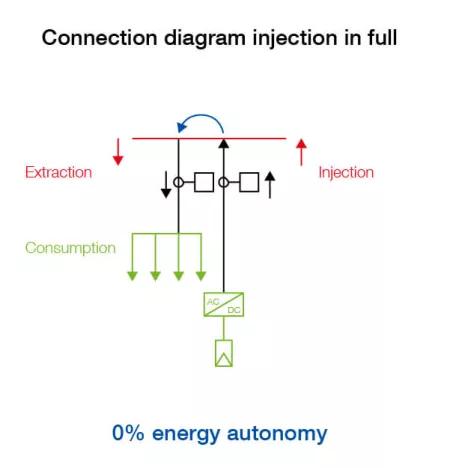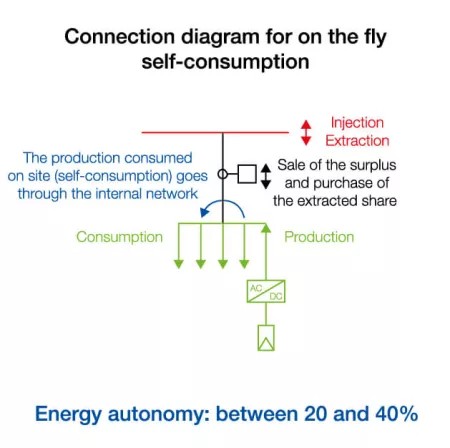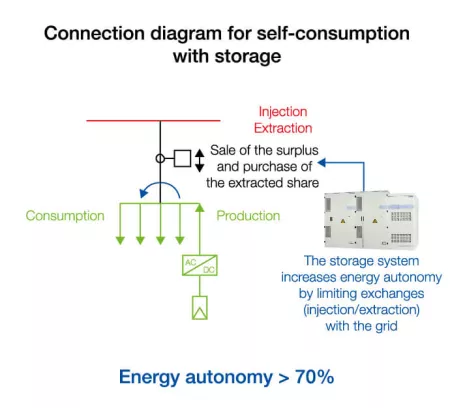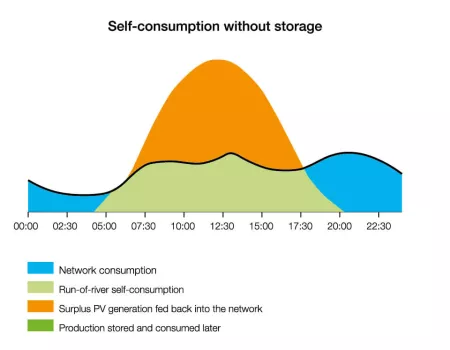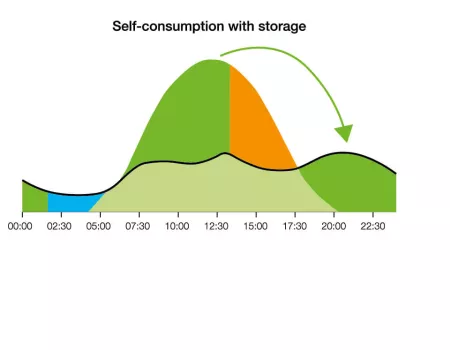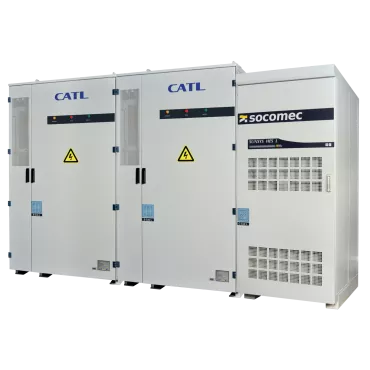Several ways to move towards energy autonomy
Self-consumption is the principle according to which the user consumes all or part of the energy they produce. The objective is to move towards energy autonomy and a 100% self-production rate. Renewable energy sources (most often photovoltaic panels) are key when it comes to achieving this objective.
- On the fly: electricity is consumed directly at the time of production.
- With control: electricity is consumed according to photovoltaic production.
- With storage: the surplus of renewable energy produced is stored in batteries and consumed later.
Note: the self-consumption of a building can be individual or collective.
Combining the demand side of management and energy storage allows users to:
- guarantee a greater independence of energy from the grid
- reduce and control costs, in terms of the installation and energy consumption
- limit photovoltaic injection into the grid and conserve the existing infrastructure
- generate new sources of income by deriving value from the energy produced and stored
Economy
Controlling energy costs
Green
Consuming clean and
sustainable energy
Connection diagrams for local photovoltaic production
Connection diagram in full
Connection diagram for on the fly self-consumption
Connection diagram for self-consumption with storage
Self-consumption and storage
Self-consumption without storage
Self-consumption with storage
Socomec solution
The SUNSYS HES storage system
The SUNSYS HES L storage system combines a bi-directional power converter and batteries to provide self-consumption with storage. SUNSYS HES L integrates a control system which manages self-consumption in order to maximise savings:
- by setting a consumption threshold from which it is preferable to use the energy from the batteries
- by making sure that the battery is available for charge (is sufficiently discharged) when the photovoltaic production is higher than the consumption




